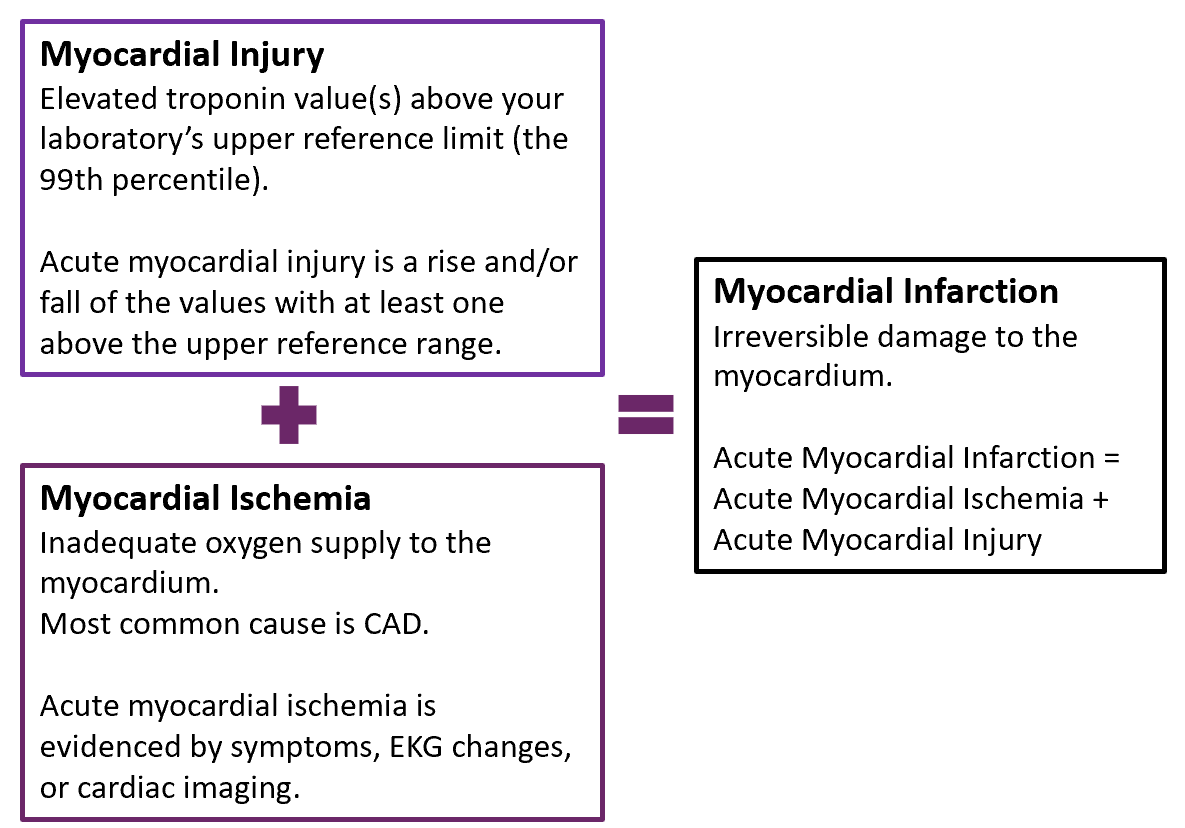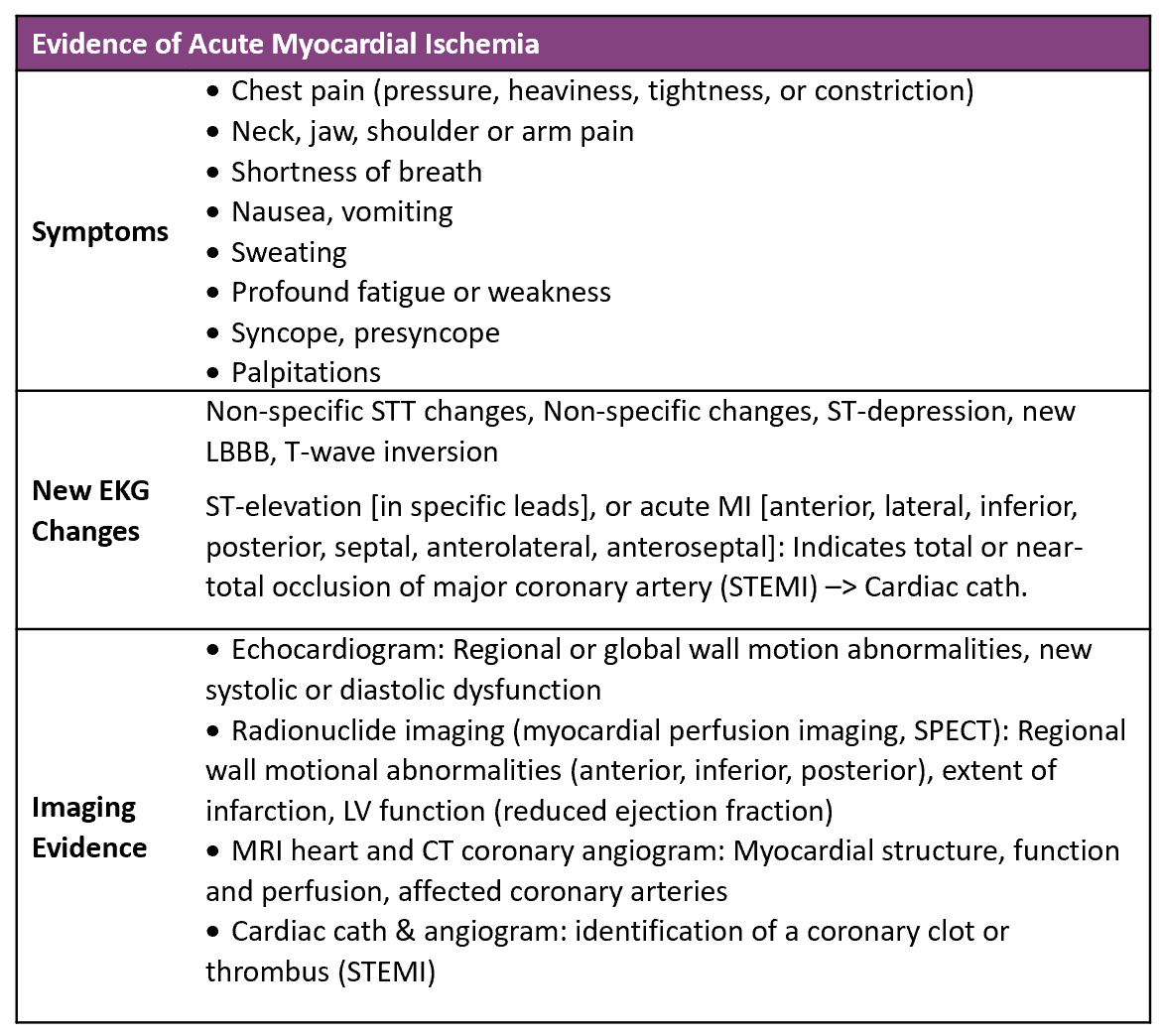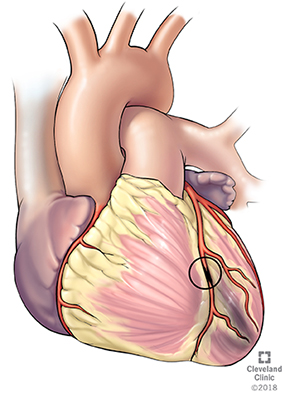Although the vast majority of chest pain patients dont have either ACS. Pericarditis is a moderately common disorder and chest pain is a frequent symptom.

Myocardial Ischemia Injury Infarction Pinson Tang
Angina develops if the demand for oxygen exceeds the amount of oxygen delivered to the heart muscle by the coronary arteries.

. The discomfort or pain often radiates to the left shoulder neck or arm. Anginal pain is often described as a tight squeezing heavy pressure or constricting feeling in the chest. Angina Pectoris It is recurring acute chest pain or discomfort resulting from decreased blood supply to the heart muscle myocardial ischemia.
The pain of myocardial ischemia may. However women more commonly have accompanying symptoms including nausea palpitations and shortness of breath. Chest pain may occur at rest or be effort related.
19 Other frequent symptoms include dyspnea anxiety palpitations dizziness and nausea. 5 Calls for chest pain are exceedingly common in EMS and result in more than 8 million ED visits yearly in the United States. It can also cause electrocardiographic ECG changes of cardiac memory which mimic myocardial ischemia but with T waves that are.
Associated symptoms often include nausea diaphoresis andor lightheadedness. Referred pain is an exception. During myocardial ischemia orofacial pain is reported by 4 in 10 patients and described as oppressive andor burning.
HOWELL MD JERRIS R. The pain may radiate to the arms back neck or jaw. Patients with myocardial infarction presenting without chest pain run a higher risk of death due to missed diagnosis and subsequently a significantly greater delay between the onset of symptoms and arrival at the hospital.
Chest pain should be described as cardiac possibly cardiac or noncardiac rather than as typical or atypical. Chest pain is the most common presenting complaint of acute myocardial infarction. Chest pain is the most common symptom among both men and women diagnosed with acute coronary syndrome ACS.
The pain can radiate to the jaw neck or arm. Of these almost 1 million may have an acute coronary syndrome ACS and about a third of these will have a myocardial infarction MI. During your primary assessment of an unresponsive 47-year-old male you find that he has occasional gasping breaths.
A case report. The pain is often retrosternal and may radiate to the left arm suggesting an ischemic etiology. Pain that localizes to a small area on the chest is more likely of chest wall or pleural origin rather than visceral.
The most common clinical manifestation of 5-FU cardiotoxicity is chest pain which can be either nonspecific or anginal and is often but not always associated with electrocardiographic ECG changes Table 1. HEDGES MDt Heberdens initial de. Chronic myocardial ischemia often presents with a fairly typical history but patients can present with atypical chest pain or pain referred to a less-typical location like the jaw stomach or back.
Symptomatic patients are most often middle-aged men. Chest pain may be atypical in few cases. Myocardial bridging causing ischemia and recurrent chest pain.
The pain is usually pleuritic or affected by body position however aggravated by lying down and relieved by sitting up. As with angina the pain associated with acute myocardial infarction is often described as. The clinical diagnosis of AMI requires an integrated assessment of the history especially with reference to chest pain along with some combination of indirect evidences of myocardial infarction using biochemical electrocardiographic and imaging modalities.
Acute myocardial infarction AMI is a cardiac emergency. The classic manifestation of ischemia is usually described as a heavy chest pressure or squeezing a burning feeling or difficulty in breathing. The chest discomfort is classically described as a squeezing heaviness or tightness.
Sometimes patients describe symptoms usually not attributed to heart disease like indigestion or feeling cold and clammy in the presence or absence of chest pain. Angina is the term for chest pain caused by ischemia. Other manifestations of PMI include shortness of breath epigastric pain or discomfort back pain or shoulder pain.
Diagnostics Differential Diagnosis of Chest Discomfort and General Approach to Myocardial Ischemia Decision Making JOHN M. Pain unrelieved by rest or nitroglycerin and lasting for more than 15 min differentiates an MI from angina. PERICARDIAL AND OTHER MYOCARDIAL DISEASES Inflammation of the pericardium due to infectious or noninfectious causes can be responsible for acute or chronic chest OTHER discomfort CARDIOPULMONARY Therefore the pain of pericarditis is thoughtto CAUSES arise principally from associated pleural inflammation and is morecommon with infectious causes.
Associated with chest pain described as local non-radiating with palpitations and walk-through phenomenon. An abrupt interruption of oxygen to the heart muscle produces myocardial ischemia. Heart attack A heart attack or myocardial infarction MI occurs when the surface covering of a fatty plaque ruptures.
Cardiopulmonary complaints are the most frequently reported symptoms among cocaine users occurring in up to 56 with chest pain being the single most frequent symptom. 8 Cocaine-associated chest pain is usually perceived as pressure-like in quality. There are many causes of pericarditis.

Myocardial Ischemia Injury Infarction Pinson Tang


0 Comments